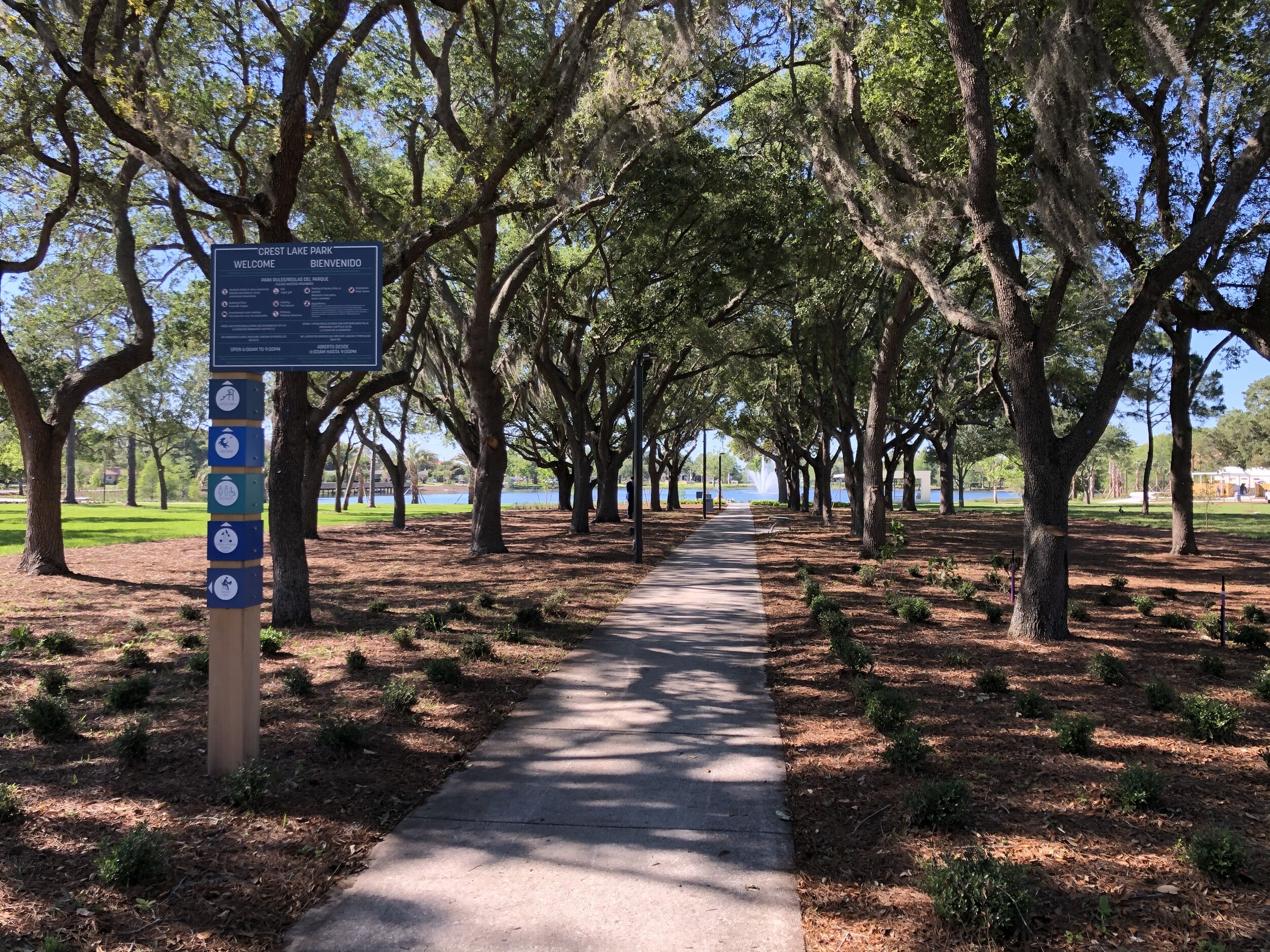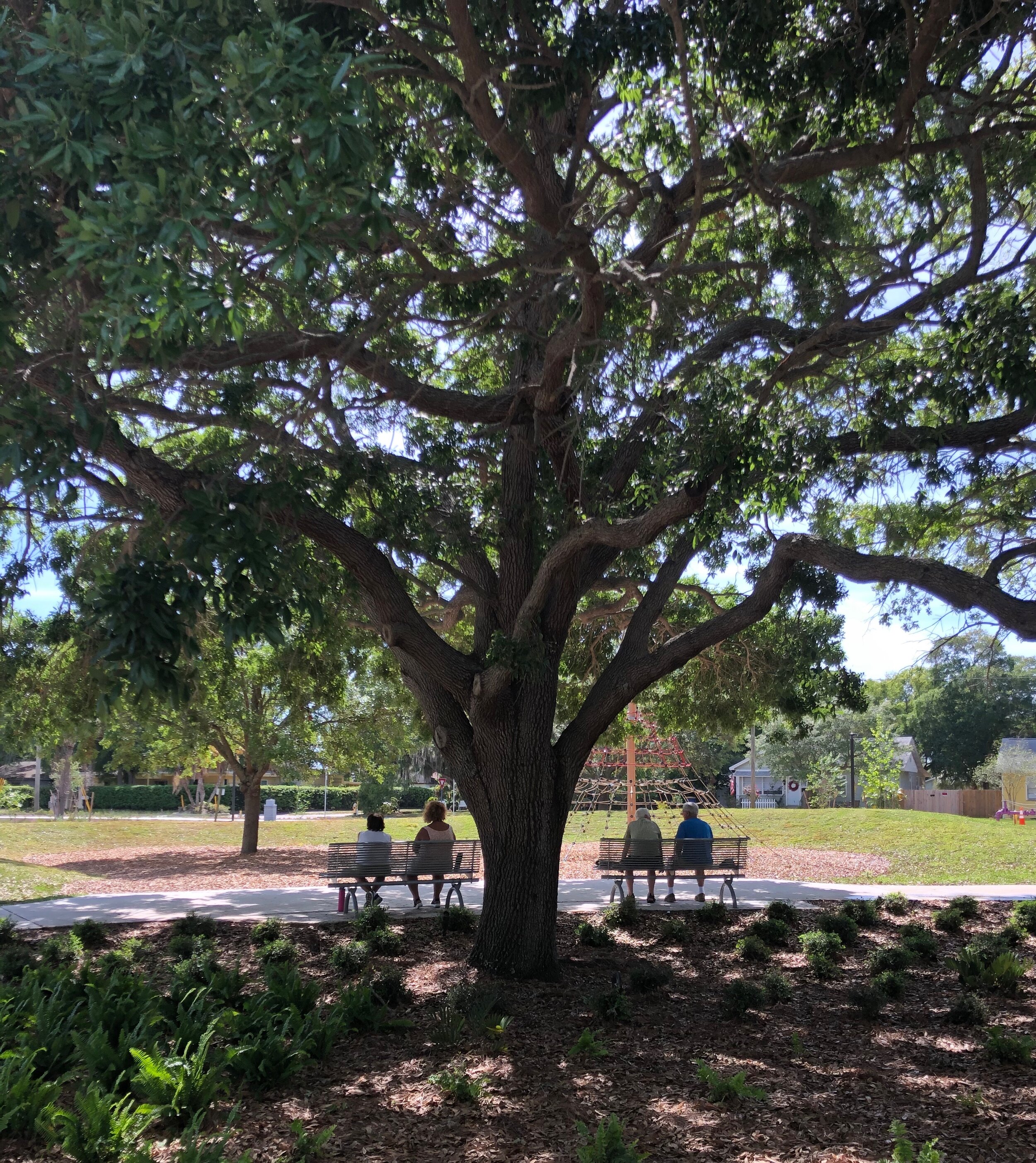Crest Lake Park Tree Strategy
Construction recently finished on Crest Lake Park in Clearwater, Florida, and locals are already enjoying the design. There are beautiful boardwalks, several unique playgrounds, an awesome splash pad, and plenty of seating areas to enjoy the view of the lake. But the best part of the park? It has an amazing tree canopy.
Letting the Canopy Tell the Story
One of our guiding design principles is to harness the spirit of the land—and that’s exactly how we approached Crest Lake Park. To make the most of the existing canopy, we sited specific amenities in places where there were natural openings. We also located open lawns and rain gardens in those spaces. Paths and walkways were carefully woven throughout the park, taking advantage of the canopy shade without disturbing the roots.
Although some trees needed to be removed due to disease, incompatibility or to ease construction logistics, each decision was weighed carefully. And ultimately, the final design added more than it removed. Many native trees, such as cypress and pine, were incorporated into the design to provide habitat to local birds and animals.
Inspired by the beauty of the trees, we designated Crest Lake Park as an arboretum so visitors could learn while exploring the park. We created educational signage to explain the benefits of urban trees, and each tree received a species identification label.
The Benefits of Trees
There’s no substitution for great trees in an outdoor space. And because it takes 15 to 20 years for them to grow large enough to produce adequate shade, a quality tree canopy is difficult to replicate. As a general rule, we always try to keep as many existing trees as we can in a project (and it hurts us every time one doesn’t make it).
Aside from adding natural beauty and character to our communities, trees are important because:
They produce shade. Shade protects us from harmful UV rays, keeps areas cooler and makes outdoor spaces more comfortable.
They help clean water. When it rains, trees can act like sponges by naturally filtering pollutants from the rainwater. This prevents those pollutants from being swept into the ocean by stormwater runoff.
They protect us from the elements. Trees create a barrier against wind, dust and rain.
They cool down the planet. By releasing water vapor into the air through their leaves, trees reduce what’s known as the “heat island” effect.
They provide habitats. Urban wildlife, such as birds, squirrels and opossums, rely on trees for nesting, protection and even food.
They improve air quality. Trees absorb pollutant gases, such as nitrogen oxides and ammonia, and trap particulates on their leaves and bark.
Next time you visit a park, whether it’s Crest Lake Park or any other, take a moment to notice the trees. By intentionally and strategically incorporating trees into our designs, we can enhance the lives of everyone—and everything—that interacts with these spaces.




